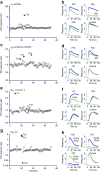Evolution of separate predation- and defence-evoked venoms in carnivorous cone snails
- PMID: 24662800
- PMCID: PMC3973120
- DOI: 10.1038/ncomms4521
Evolution of separate predation- and defence-evoked venoms in carnivorous cone snails
Abstract
Venomous animals are thought to inject the same combination of toxins for both predation and defence, presumably exploiting conserved target pharmacology across prey and predators. Remarkably, cone snails can rapidly switch between distinct venoms in response to predatory or defensive stimuli. Here, we show that the defence-evoked venom of Conus geographus contains high levels of paralytic toxins that potently block neuromuscular receptors, consistent with its lethal effects on humans. In contrast, C. geographus predation-evoked venom contains prey-specific toxins mostly inactive at human targets. Predation- and defence-evoked venoms originate from the distal and proximal regions of the venom duct, respectively, explaining how different stimuli can generate two distinct venoms. A specialized defensive envenomation strategy is widely evolved across worm, mollusk and fish-hunting cone snails. We propose that defensive toxins, originally evolved in ancestral worm-hunting cone snails to protect against cephalopod and fish predation, have been repurposed in predatory venoms to facilitate diversification to fish and mollusk diets.
Figures




References
-
- Terlau H. et al. Strategy for rapid immobilization of prey by a fish-hunting marine snail. Nature 381, 148–151 (1996). - PubMed
-
- Lewis R. J., Dutertre S., Vetter I. & Christie M. J. Conus venom peptide pharmacology. Pharmacol. Rev. 64, 259–298 (2012). - PubMed
-
- Olivera B. M. & Cruz L. J. Conotoxins, in retrospect. Toxicon 39, 7–14 (2001). - PubMed
-
- Olivera B. M. et al. Peptide neurotoxins from fish-hunting cone snails. Science 230, 1338–1343 (1985). - PubMed
Publication types
MeSH terms
Substances
Associated data
- Actions
- Actions
- Actions
- Actions
- Actions
- Actions
- Actions
- Actions
- Actions
- Actions
- Actions
- Actions
- Actions
- Actions
- Actions
- Actions
- Actions
- Actions
- Actions
- Actions
- Actions
- Actions
- Actions
- Actions
- Actions
- Actions
- Actions
- Actions
- Actions
- Actions
- Actions
- Actions
- Actions
- Actions
- Actions
- Actions
- Actions
- Actions
- Actions
- Actions
- Actions
- Actions
- Actions
- Actions
- Actions
- Actions
- Actions
- Actions
- Actions
- Actions
- Actions
- Actions
- Actions
- Actions
- Actions
- Actions
- Actions
- Actions
- Actions
- Actions
- Actions
- Actions
- Actions
- Actions
- Actions
- Actions
- Actions
- Actions
- Actions
- Actions
- Actions
- Actions
- Actions
- Actions
- Actions
- Actions
- Actions
- Actions
- Actions
- Actions
- Actions
- Actions
- Actions
- Actions
- Actions
- Actions
- Actions
- Actions
- Actions
- Actions
- Actions
- Actions
- Actions
- Actions
- Actions
- Actions
- Actions
- Actions
- Actions
- Actions
- Actions
- Actions
- Actions
- Actions
- Actions
- Actions
- Actions
- Actions
- Actions
- Actions
- Actions
- Actions
- Actions
- Actions
- Actions
- Actions
- Actions
- Actions
- Actions
- Actions
- Actions
- Actions
- Actions
- Actions
- Actions
- Actions
- Actions
- Actions
- Actions
- Actions
LinkOut - more resources
Full Text Sources
Other Literature Sources

